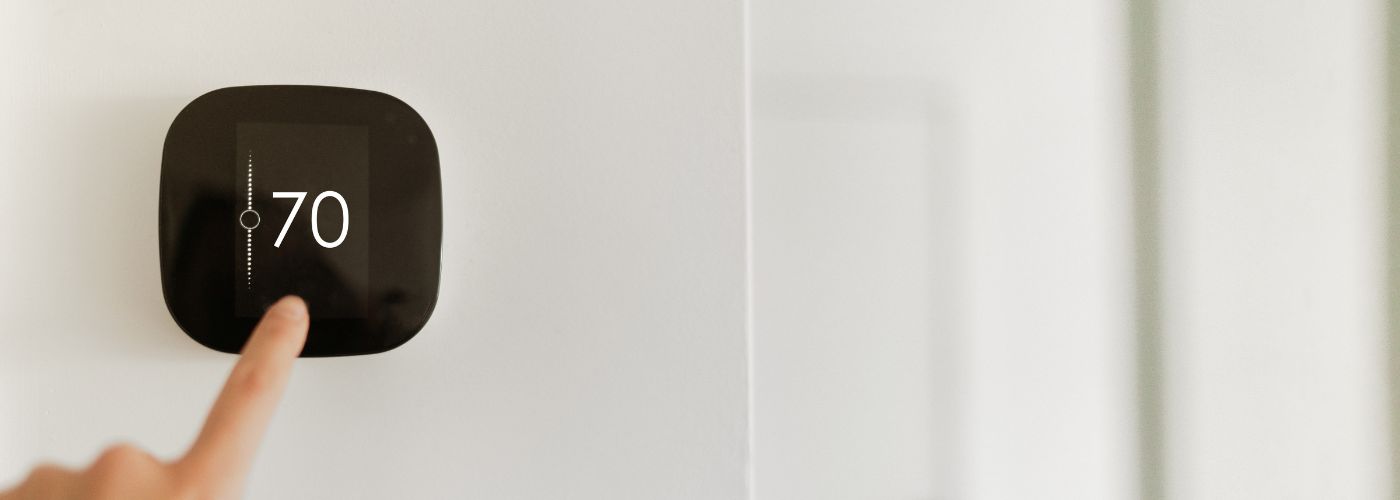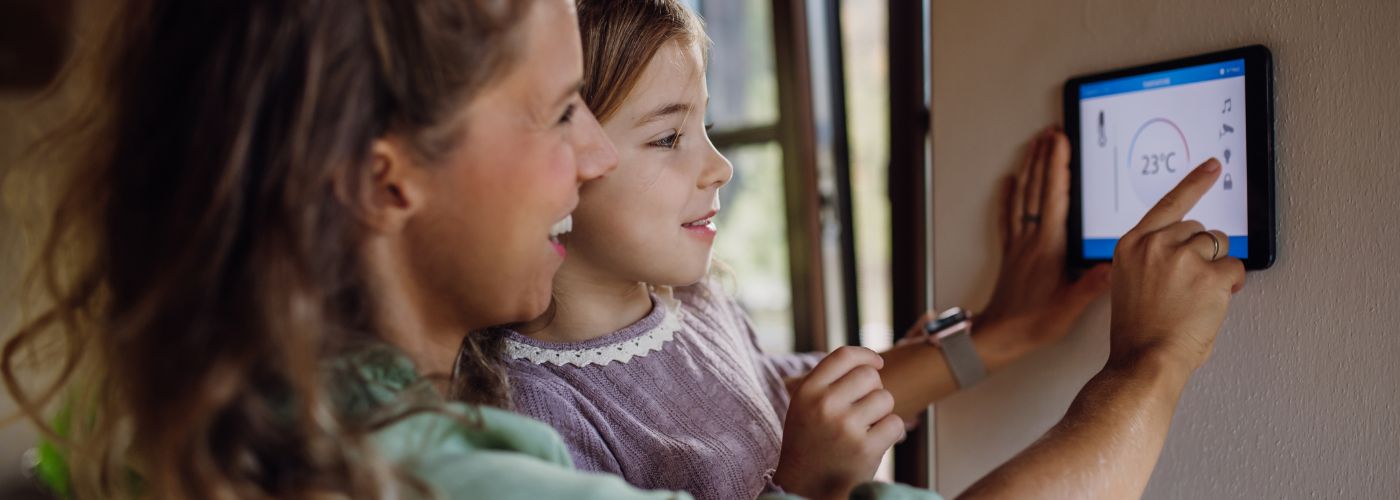In the age of home automation, where convenience meets efficiency, the battle of the thermostats is heating up. On one side, we have programmable thermostats—those reliable workhorses that have been keeping our homes comfortable for years. On the other side stand smart thermostats, flaunting their sleek designs and advanced features that promise to revolutionize how we control our indoor climates. But as technology advances at lightning speed, a pressing question looms: what option is better between programmable vs smart thermostats? Let’s dive deep into this feud!
What Do Thermostats Do?
Thermostats serve as the central nervous system of your home’s climate control, operating behind the scenes to maintain comfort and energy efficiency. They work by continuously monitoring the ambient temperature and comparing it to your desired settings.
When a deviation is detected, thermostats signal your heating or cooling systems to kick in, ensuring that you enjoy a pleasant environment regardless of external weather conditions. This simple yet elegant mechanism allows for personalized comfort tailored to individual preferences.
Beyond mere temperature regulation, modern smart thermostats are transforming how we interact with our living spaces. Equipped with sophisticated algorithms and sensors, these devices learn from our habits and adjust themselves accordingly. This optimizes energy use while saving money on utility bills.
For instance, if you tend to lower the heat when heading out for work every morning, a smart thermostat can learn this pattern and preemptively adjust without manual input. The result? A seamless integration into daily life that exemplifies not just convenience but also sustainability!
Benefits of Smart WiFi Thermostats
Smart WiFi thermostats offer more than just temperature control; they bring a wealth of benefits that enhance home comfort and energy efficiency. One standout feature is their ability to learn household patterns.

They adjust the heating or cooling schedule based on when you’re home, ensuring comfort while reducing unnecessary energy usage. This kind of adaptive learning can lead to significant savings on your energy bill.
Moreover, smart thermostats provide remote access through mobile apps. Imagine adjusting your home’s temperature from anywhere—whether you’re at work, vacationing, or cozying up in bed. You can also receive alerts about unusual temperature changes, helping prevent issues like frozen pipes in winter months.
The integration with smart home systems adds another layer of convenience. Voice commands can make managing your environment effortless and intuitive! This is one of the many benefits of programmable vs smart thermostats.
Benefits of Programmable Thermostats
Programmable traditional thermostats offer a blend of efficiency and control that can significantly enhance your home comfort. One major advantage is their ability to adapt heating and cooling schedules based on your timeline.
By setting specific temperatures for different times of the day, you can ensure your home is cozy when you arrive while saving energy during off-peak hours—imagine coming home to warmth without wasting resources.
Additionally, these thermostats often come with straightforward interfaces that make adjustments a breeze. Unlike smart models, which may require internet connectivity or app management, programmable traditional units work seamlessly without relying on technology.
This reliability means you won’t face surprises during power outages; your settings remain intact!
Cons of Smart WiFi Thermostats
Smart WiFi thermostats are often hailed for their convenience, but they do come with a few drawbacks worth considering. One significant issue arises during power outages. Unlike traditional thermostats, which can operate independently, smart thermostats rely heavily on your home’s WiFi connection and battery backup systems.

When the power goes out, not only does your heating or cooling get interrupted, but you also lose access to critical features like remote control and energy monitoring until the system comes back online.
Another concern is compatibility. Many homeowners may find that their existing HVAC systems aren’t compatible with certain smart models.
This incompatibility can lead to unexpected installation costs or even the need for a complete system upgrade. Additionally, these devices collect user data for better performance, raising privacy concerns as sensitive information is stored and transmitted over networks that could be vulnerable to breaches.
While smart technology aims to enhance comfort and efficiency, understanding its limitations helps users make informed decisions about integrating it into their homes. Overall, this is one of the new cons of programmable vs smart thermostats.
Cons of Programmable Thermostats
While programmable thermostats offer many benefits, there are notable downsides worth considering. One major issue is complexity. For some, navigating the features and settings can feel like solving a puzzle, especially for those not tech-savvy.
A steep learning curve can lead to frustration and improper settings, which might compromise comfort and energy savings.
Moreover, these devices can be less effective in homes with inconsistent heating or cooling systems. If your home has drafty rooms or areas that heat up faster than others, a one-size-fits-all temperature schedule may not deliver the intended results.
In such cases, relying solely on a programmable thermostat might lead to wasted energy as you fight against the natural flow of temperatures in different spaces. This is one of the few cons of programmable vs smart thermostats.
User Experiences Between Programmable vs Smart Thermostats
When it comes to user experiences, programmable and smart thermostats offer distinct pathways for comfort and efficiency. Programmable thermostats provide a straightforward solution: set it, forget it.
Users appreciate the simplicity of setting schedules based on their routines, leading to energy savings without constant adjustments. However, this static approach can sometimes hinge on accurately predicting one’s day-to-day activities.
On the other hand, smart thermostats turn this experience into something dynamic and intuitive. They learn from user behavior over time—adjusting temperatures when you leave or come home unexpectedly.
This personalized touch not only enhances comfort but also fosters an engaging interaction where users feel in control of their environment. The integration with smartphones further amplifies convenience. Any changes can be made with a quick tap while out and about, bringing peace of mind that programmable models often lack. This helps minimize any unexpected HVAC maintenance.
Ultimately, choosing between them boils down to whether you prefer simplicity or crave a more responsive climate management system that adapts to your lifestyle seamlessly.
Frequently Asked Questions (FAQ)
Programmable thermostats let you set fixed heating and cooling schedules based on time and day, then follow that schedule until you change it. Smart thermostats go further by connecting to WiFi, learning your habits, using sensors, and allowing remote control from your phone, so they can automatically adjust temperatures based on when you’re home, away, or asleep.
Both can save energy when used correctly, but smart thermostats typically offer greater savings. A well-programmed traditional thermostat can cut energy use by following consistent schedules, while a smart thermostat continually fine-tunes temperatures using learning algorithms, geofencing, and real-time data. This makes it easier to avoid waste from forgotten settings or unexpected schedule changes.
Yes, WiFi is important for most smart thermostat features, such as app control, usage reports, software updates, and smart home integrations. However, even without WiFi, a smart thermostat will still function like a basic digital thermostat—you can adjust the temperature manually on the wall. You’ll just lose remote access and some of the “smart” automation until your internet connection is restored.
